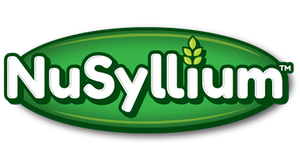
Did you know that adding fiber to your diet has countless health benefits? Fiber is a type of carbohydrate that is found in plant-based foods and helps keep the digestive system running smoothly. It also supports heart health and helps maintain blood sugar levels. Getting more fiber in one’s diet can even help with weight management: It makes you feel fuller longer because it takes your body longer to digest.
The national fiber recommendation for women between 18 and 50 years of age is 25 grams per day, and 30 to 38 grams a day for men. The best way to get this fiber is from incorporating numerous food fiber sources into meals. While getting the most fiber from the food you eat is ideal, nutrition experts believe it's all right to fill any fiber gap you have with a good quality fiber supplement, such as one that’s natural and organic, like NuSyllium Natural Organic Fiber. Adding this fiber supplement is a simple, safe and convenient way to increase your daily fiber intake, while helping improve digestive health. Here are five easy and delicious ways you can get more fiber in your diet.
Make the Switch to Whole Grain
Add Fruits and Veggies to Every Meal
Adding fruit and vegetables to every meal is a tasty and easy way to increase your fiber intake that’s also healthy and refreshing. Although all fruits have nutritional values, some have more fiber than others. Raspberries win the fiber race at 8 grams per cup, while other exotic fruits, such as mango, have 5 grams. Apples, bananas, oranges, and strawberries all have approximately 3 to 4 grams of fiber per serving. For vegetables, the general rule of thumb is that the darker the color, the higher the fiber content. For example, a medium sized artichoke has an astonishing 10 grams of fiber.
Beans, Beans and More Beans
Beans certainly are magical! They contain both soluble and insoluble fiber so they work double time to keep your digestive system running smoothly. The average cup of beans provides a whopping 14 grams of fiber, which is more than 50% of the daily value for women. Although all beans are fiber-packed, the navy and white beans are the most fiber-rich at 19 grams of fiber per cup. Garbanzo beans, kidney beans, and pinto beans are popular choices averaging at 14 grams of fiber per cup. You could also try to incorporate other high fiber legumes, such as peas, soybeans, and lentils into your diet.
Popcorn
Popcorn, calorie for calorie, is the best snack you can eat when it comes to fiber intake. Air-popped popcorn is very high in fiber and has almost 4 grams per 3 cups. All you need is dry kernels, a microwaveable safe bowl, and a plate to cover it with. Then all you have to do is microwave it for about 5 minutes, or until the popping slows down. Pair it with a movie and you can lean back, kick your feet up, and relax while knowing you have your daily fiber intake covered.
Cauliflower
Cauliflower is an extremely healthy and versatile vegetable that’s a significant source of nutrients, including fiber. One cup of cauliflower has about 10% of the daily national recommendation. You can easily substitute white grains with this high-fiber enriched vegetable. For example, you can replace mashed potatoes with mashed cauliflower for a fiber enriched side dish. You can also use a food processor to make your very own cauliflower rice or even create a pizza crust. With cauliflower there are so many delicious ways to get more fiber in your diet -- the possibilities are endless.
Try NuSyllium Organic Natural Fiber to promote and maintain digestive health, including occasional constipation and to help maintain regularity. You can use it for lowering cholesterol and promoting heart health and to maintain healthy blood sugar levels.*
NuSyllium fiber can also be used as part of a weight management program to feel less hungry between meals, likely because soluble fiber increases feelings of fullness and slows carbohydrate metabolism.
*Talk to your healthcare provider for advice if you are taking medications or control your blood sugar levels or if you are using NuSyllium as part of a cholesterol-lowering program.

